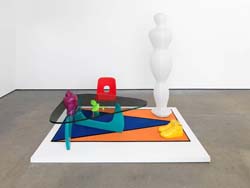
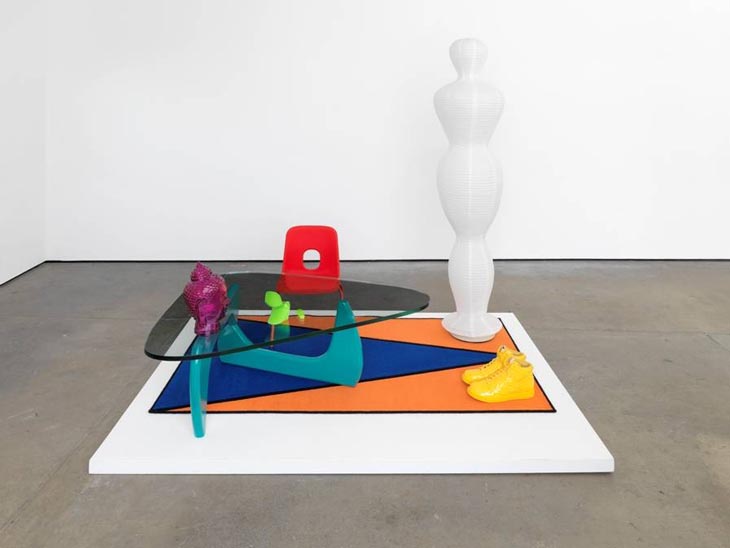
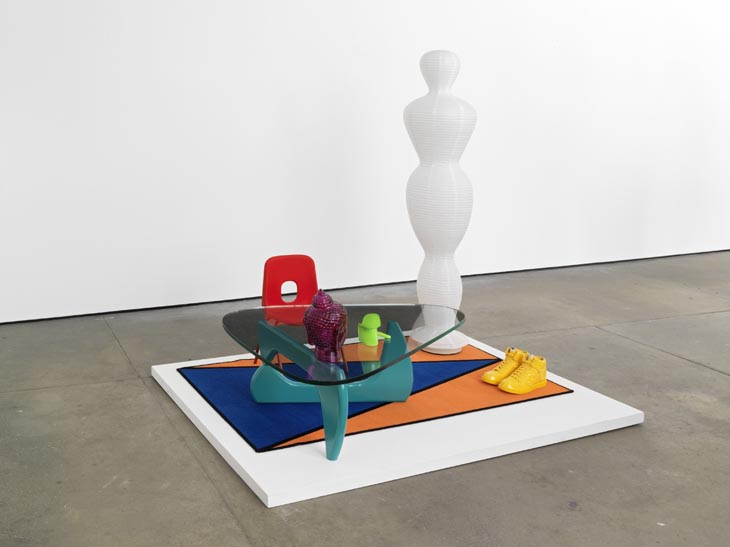
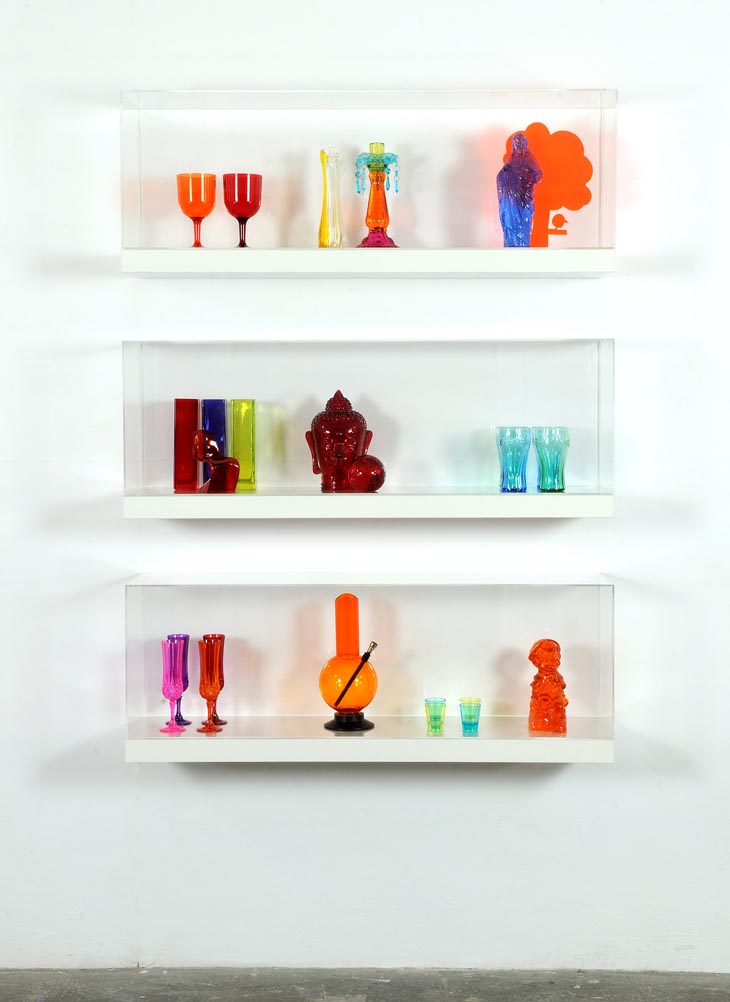
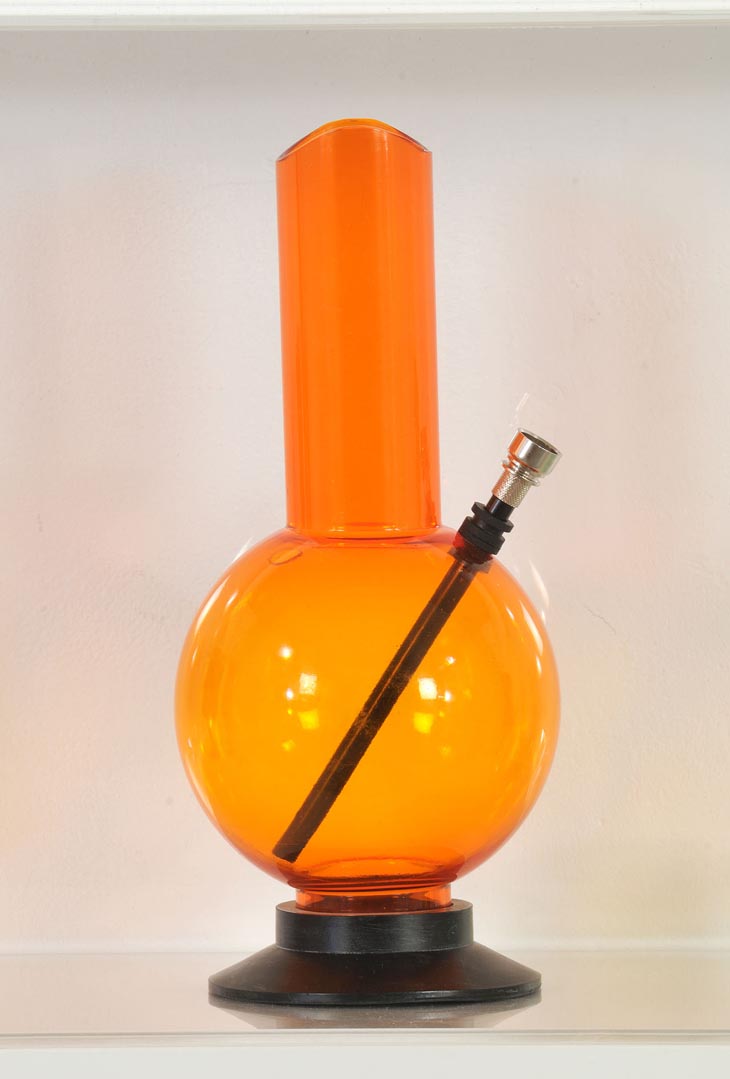
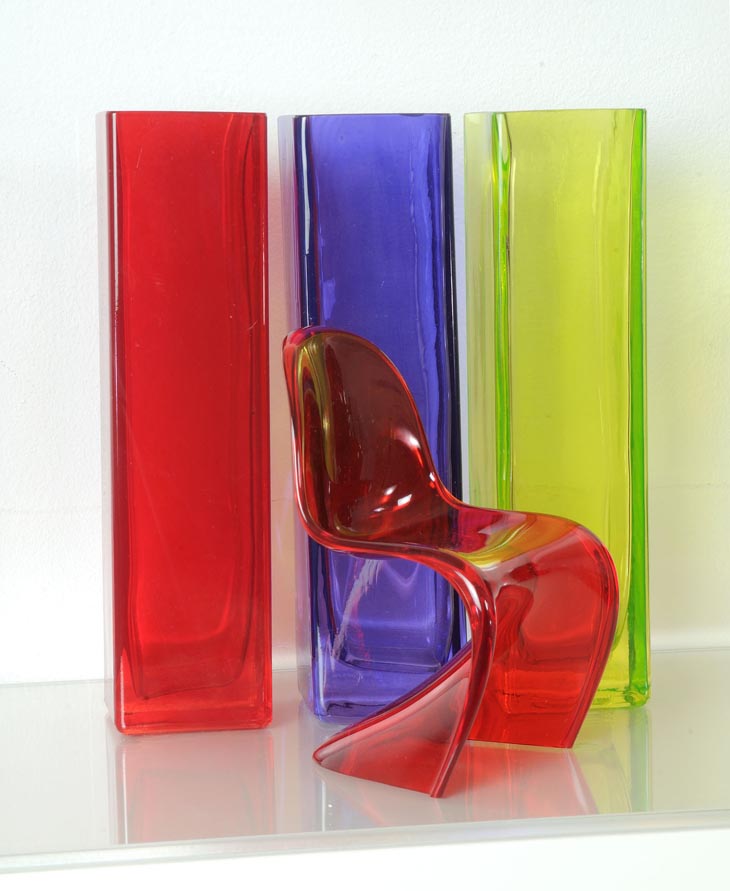
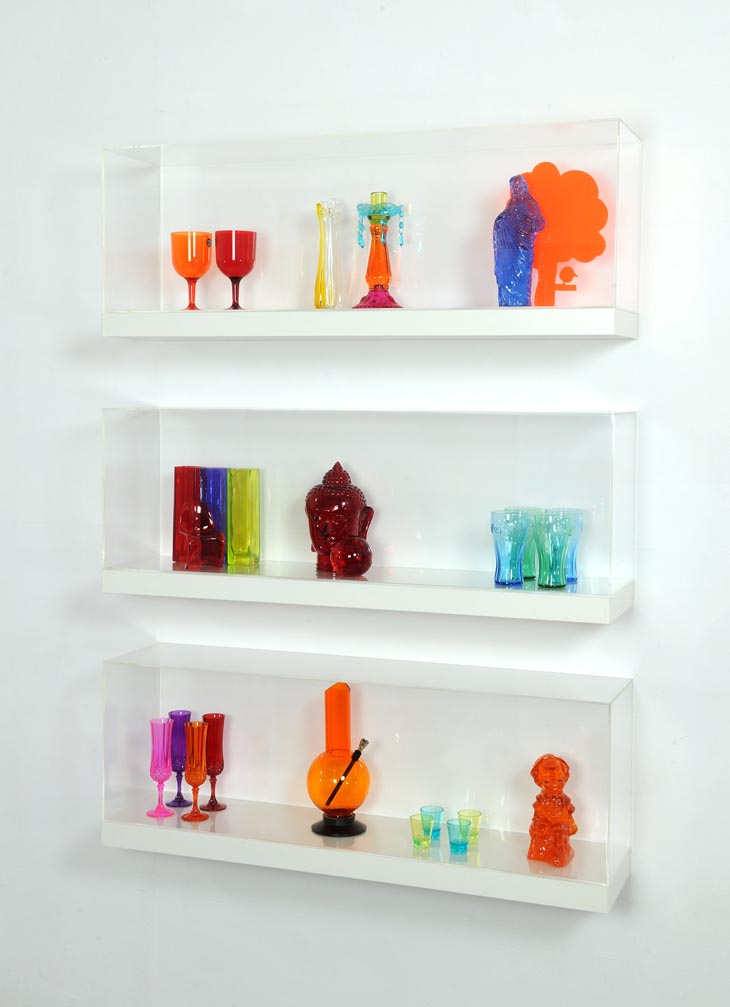
Matthew Darbyshire
Darbyshire’s homey assemblages function as models of modern living, the kind of dioramic displays that might represent ‘today’ in design museums or shop windows. Their studied genericism and fetishistic staging doubles as a form of portraiture. Drawing inspiration from novelists such as JG Ballard and Bret Easton Ellis, Darbyshire conceives his sculptures in relation to shopping theory: we are what we buy, and use our belongings to project a desired image of ourselves. Furnished with well-known affordable brand name goods, Untitled: Furniture Island No. 2 invites speculation on the type of person who might have this as their living environment. Its clinical hipness paints an ironic image of tragic yuppie-ness: chances are you probably own at least one of the items on display.
Matthew Darbyshire provocatively repackages the homogenisation of contemporary design: the moulded retro-future furnishings and CMYK colour schemes that dominate both public and private space. Democratised from minimalist couture chic to high-street decor to budget home-ware chintz, Darbyshire’s assembled objects try to define just what it is that makes candy-coloured plastic so modern, so appealing. Replicating a domestic display, Untitled: Shelves No. 5 presents a collection of purchased goods: a Verner Panton miniature and a bong, religious icons and cocktail glasses, all fabricated in the same style, the numbing yet infinitely seductive hallmark of lifestyle aspiration.





